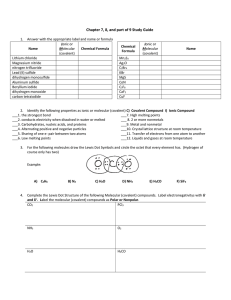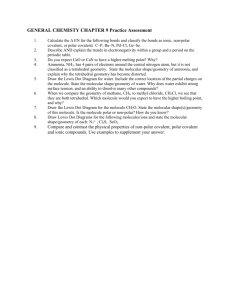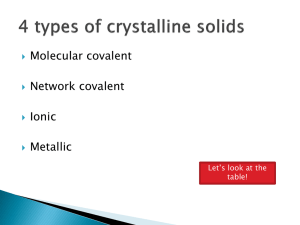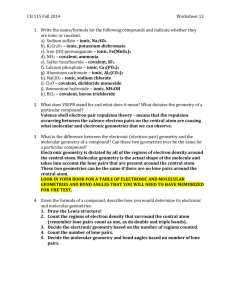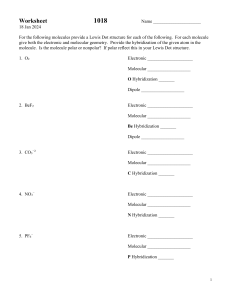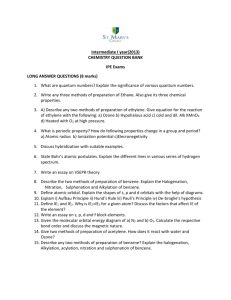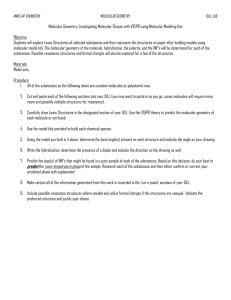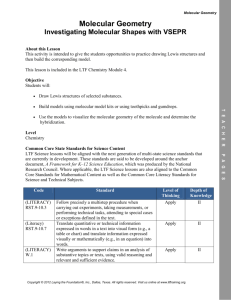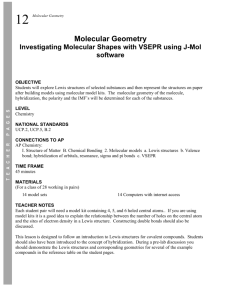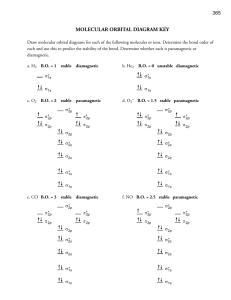Molecular Structure and Hybridization Test #4
advertisement
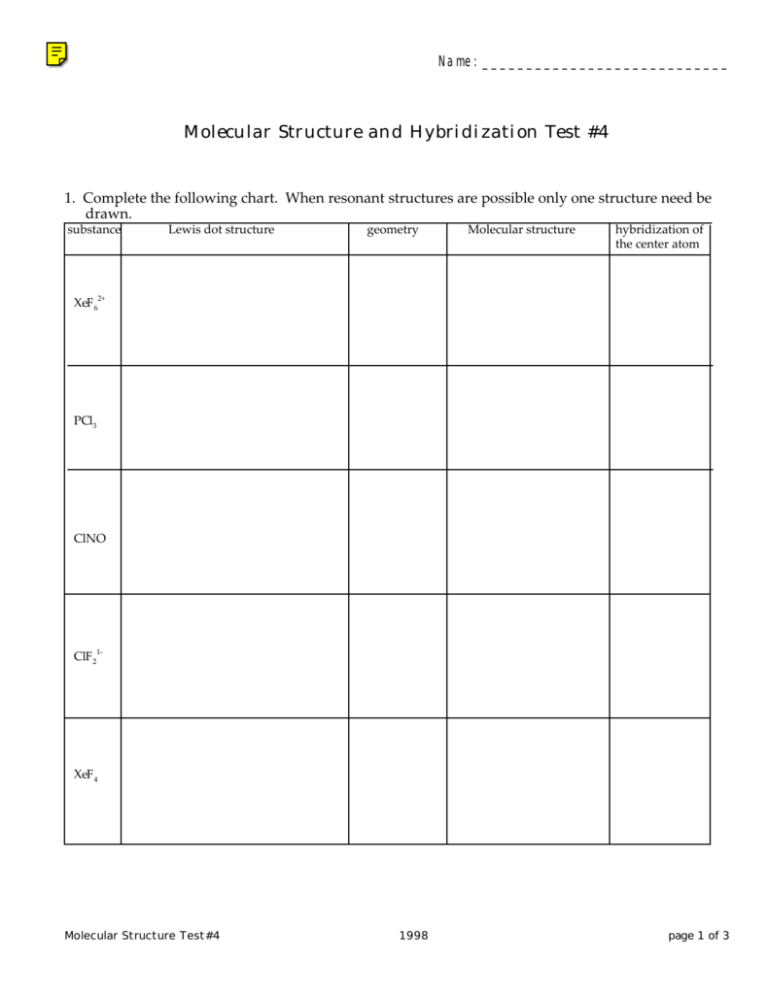
Name:____________________________ Molecular Structure and Hybridization Test #4 1. Complete the following chart. When resonant structures are possible only one structure need be drawn. substance Lewis dot structure geometry Molecular structure hybridization of the center atom XeF 62+ PCl3 ClNO ClF 21- XeF 4 Molecular Structure Test#4 1998 page 1 of 3 2. Predict which of the following bonds are covalent or ionic. For those which are covalent, differentiate between polar and nonpolar covalent bonds. Use the symbols I (Ionic), PC (polar covalent), and NPC (non-polar covalent). a) Ni-H d) O-Cl b) P-P e) S-C c) Ra-S 3. Determine the oxidation state of the indicated element in each of the following: a) Co in K3CoF6 d) Mn in K2MnO4 b) Mn in KMnO4 e) V in VO2+ c) Sb in SbO(OH) f) W in WO42- 4. The theory of hybridization is used to explain some of the observed properties of molecules. During the introduction of this topic in class methane was used as an example. What properties of methane can be explained away nicely with the theory of hybridization but only with difficulty, if at all, by the quantum theory without hybridization. 5. Sulfur trioxide, sulfur (VI) oxide, can have resonant structures. Draw all Lewis resonant structures of this compound. Molecular Structure Test#4 1998 page 2 of 3 6. HIOAg was used extensively by the Lone Ranger. The existence of this compound is somewhat possible if we assume that it is ionic with a formula of HIOAg2 . (The formula HIOAg is possible if silver takes on one of its more esoteric oxidation states of a 2+ ). In either case what geometry and structure would you predict for such a compound, that is, what geometry and structure would exist for HIO2- ? One Step Beyond Phosphorous forms tetra atomic molecules. Suggest a possible Lewis structure for P4 without giving phosphorous a double bond. Molecular Structure Test#4 1998 page 3 of 3
